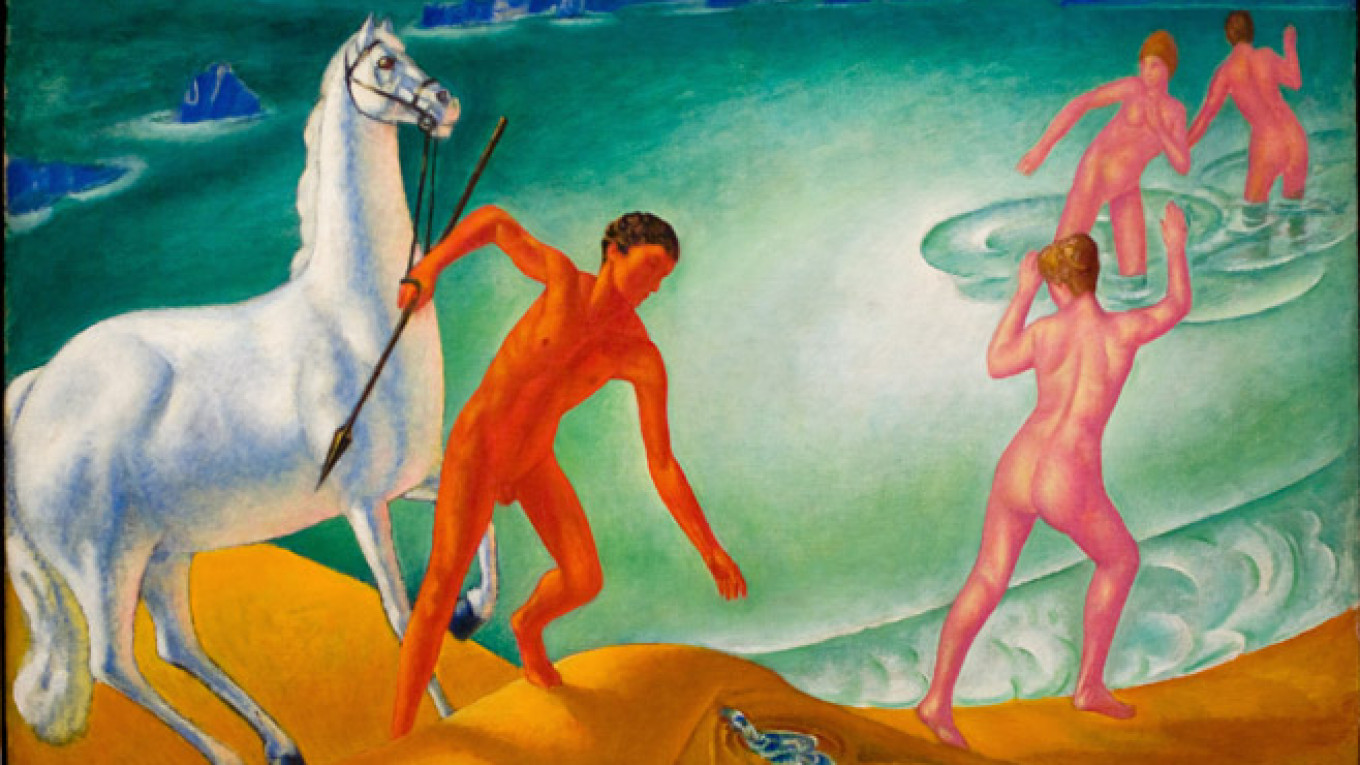ST. PETERSBURG — This year marks the 100th anniversary of the start of World War I, and across Europe it is being remembered with exhibitions, lectures, theatrical presentations and the release of new books.
Russia entered World War I on Aug. 1, 1914, when Germany declared war against the Russian Empire and 2 million soldiers were soon called to fight.
Like elsewhere, the start of the war in Russia was marked by an upsurge of patriotism. St. Petersburg was renamed Petrograd, people with German roots changed their surnames to Russian ones, and many artists and museum workers volunteered to go to the front lines, where many were wounded or killed.
St. Petersburg's Russian Museum is among the first art museums in the country to now recognize and pay respect to World War I with its new exhibition, "The First World War, 1914-1918," devoted to the memory of the victims of the conflict.
The exhibition sheds light on hundreds of artists and museum curators who fought on the front lines, participated in military brigades, created patriotic works of art and raised the morale of the soldiers.
Among the 200-plus exhibits on display are paintings, drawings done during short breaks between battles, the covers of satirical magazines, posters and pieces of folk art. A sound installation also fills the halls with the songs, marches and waltzes of the era, adding to the atmosphere.
In addition to this exhibition, the museum also has a display featuring a large and rich collection of photographs and films taken during that same time period. Throughout the display, viewers can see how Russian society was optimistic and certain of victory over Germany and Austria.
As criticism increased, the country entered another period, one of strikes and social unrest. The Russian Empire soon collapsed, and although it lost 900,000 soldiers and officers on the front lines, Russia was not invited to participate in signing the peace treaty after the war ended.
Then in Russia's new, post-revolutionary society, nobody wanted to hear about the heroes of World War I, about the injured, about the misery of the displaced populations. It became referred to as the "Forgotten War," and the new government prohibited the wearing of medals awarded during the course of the war as new heroes and new awards were promoted during the Russian Civil War.
The exhibition also displays a number of rare items, such as a monumental canvas by Vasily Shukhaev entitled "Regiment at the Emplacement Site." When it was shown in 1917 it was named "A Requiem for Russian Officers," with an intense drama captured under an appearance of calm in the painting as the viewer knows that in a few hours these officers will die.
Another striking painting is "In the Line of Fire" by Kuzma Petrov-Vodkin. The artist shows three young, handsome men in the last seconds of their lives and uses intense reds and greens to convey despair and futile bravery.
Many of the large, mosaic-like canvasses on display, with deep, somber colors, were made by the enigmatic and tragic Russian genius Pavel Filonov. Looking at his work, it is obvious that before the start of the war he foresaw the disaster. Some of his works show the cynical dividing-up of the spoils of victory, such as in his "Feast of the Kings."
A more modern piece in the exhibition is a bronze sculpture called "Soldier" by the contemporary Russian artist Andrei Kovalchuk, who finished it in 2013. The sculpture manages to connect the present to the past and honors the heroes of World War I, making it a striking and memorable work of art.
Other smaller museums in the city are commemorating the anniversary this year with their own exhibitions, such as the Military Historical Museum of Artillery, Engineers and Signal Corps at 7 Alexandrovsky Park and the Military Medicine Museum at 2 Lazaretny Pereulok, where an exhibition pays tribute to the courage of doctors, nurses and professors who organized the medical service during the war.
The Tsarskoye Selo State Museum-Preserve is also honoring the anniversary with the opening of a new World War I museum in the Martial Chamber. Featuring a permanent display entitled "Russia in the Great War," the museum is open to visitors from Thursday to Tuesday, from 10 a.m. to 5 p.m.
For more info about the exhibits, visit www.rusmuseum.ru or milmed.spb.ru.
Contact the author at [email protected]
A Message from The Moscow Times:
Dear readers,
We are facing unprecedented challenges. Russia's Prosecutor General's Office has designated The Moscow Times as an "undesirable" organization, criminalizing our work and putting our staff at risk of prosecution. This follows our earlier unjust labeling as a "foreign agent."
These actions are direct attempts to silence independent journalism in Russia. The authorities claim our work "discredits the decisions of the Russian leadership." We see things differently: we strive to provide accurate, unbiased reporting on Russia.
We, the journalists of The Moscow Times, refuse to be silenced. But to continue our work, we need your help.
Your support, no matter how small, makes a world of difference. If you can, please support us monthly starting from just $2. It's quick to set up, and every contribution makes a significant impact.
By supporting The Moscow Times, you're defending open, independent journalism in the face of repression. Thank you for standing with us.
Remind me later.






